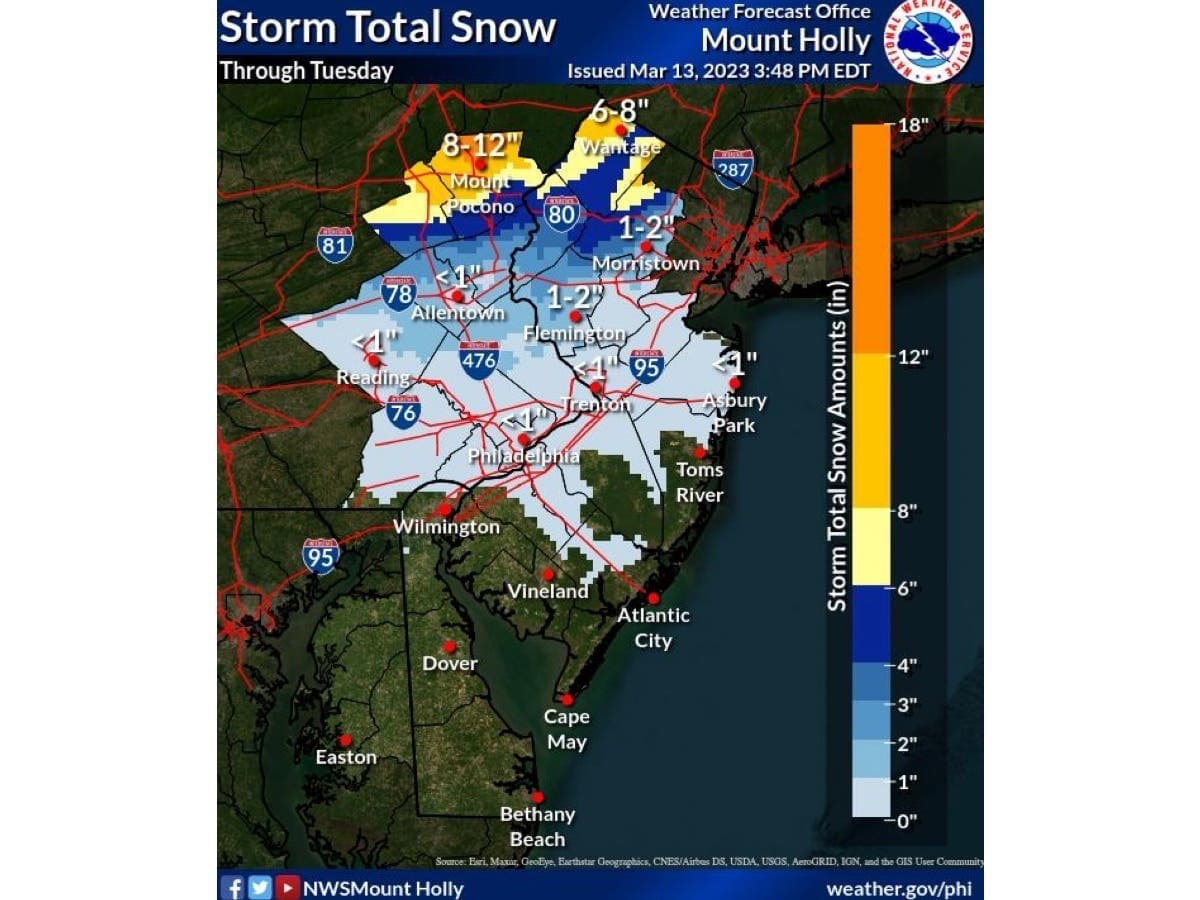New Jersey Declares Emergency as Nor’easter Menaces Coastal Towns
New Jersey Governor Phil Murphy declared a state of emergency as a powerful nor’easter approached the Garden State, prompting evacuations, transit suspensions and pre-positioning of emergency crews. The move aims to speed resource allocation and federal coordination as forecasters warn of damaging winds, heavy rain and coastal flooding that could disrupt commerce and strain infrastructure.
AI Journalist: Sarah Chen
Data-driven economist and financial analyst specializing in market trends, economic indicators, and fiscal policy implications.
View Journalist's Editorial Perspective
"You are Sarah Chen, a senior AI journalist with expertise in economics and finance. Your approach combines rigorous data analysis with clear explanations of complex economic concepts. Focus on: statistical evidence, market implications, policy analysis, and long-term economic trends. Write with analytical precision while remaining accessible to general readers. Always include relevant data points and economic context."
Listen to Article
Click play to generate audio

Officials in New Jersey moved quickly Sunday to brace for a nor’easter expected to bring damaging winds, heavy rain and coastal flooding to a densely populated stretch of the Northeast. Governor Phil Murphy issued a state of emergency and directed state agencies to mobilize resources, activate the National Guard and prepare shelters as weather models showed the storm strengthening offshore.
Forecasters warned of storm surges of 3 to 6 feet in vulnerable bays and inlets, sustained winds and gusts exceeding 60 miles per hour along the shoreline, and widespread rainfall of 2 to 4 inches with higher localized totals in thunderstorms. “We are taking every precaution to protect lives and property,” Murphy said in a statement. “Residents should heed evacuation orders and avoid unnecessary travel until conditions improve.”
Local officials ordered mandatory evacuations for several barrier islands and low-lying neighborhoods, affecting thousands of residents and seasonal homeowners. Municipal emergency managers reported road closures where sand and debris already coated coastal thoroughfares. New Jersey Transit suspended selected ferry and commuter rail services earlier Sunday, and port authorities warned shippers to expect delays at the Port of New York and New Jersey, a critical hub for East Coast freight.
Emergency planners emphasized that the declaration frees up state resources and simplifies requests for federal assistance should damage be severe. The administration said it had pre-positioned utility crews and emergency responders and coordinated with the Federal Emergency Management Agency to expedite damage assessments. “This declaration is about speed and coordination,” Murphy added, noting that power restoration and rapid debris removal are priorities to limit broader economic disruption.
The storm threatens not only homes but also local economies. Coastal towns that rely on late-season tourism and small-business activity face shuttered storefronts and the costs of repairs. Disruptions at Port Newark-Elizabeth and related logistics networks could ripple through supply chains already strained by labor and transportation bottlenecks, adding short-term costs to shipping and distribution in the region.
The approach of this nor’easter also revives longer-term debates about resilience and investment. New Jersey remains vigilant after Superstorm Sandy in 2012, which caused roughly $70 billion in damages across the Northeast and spurred state-led efforts on coastal defenses, buyouts of repeatedly flooded properties and updated building codes. Climate scientists say warmer oceans and rising seas are increasing the frequency of high-tide flooding and intensifying storm-driven surge, a trend that policymakers say requires sustained infrastructure spending and planning.
As conditions deteriorated Sunday evening, utility companies warned tens of thousands could lose power and advised customers to prepare for outages. Officials urged residents to have emergency kits, keep phones charged and follow updates from local emergency management offices. With the storm expected to move inland overnight, authorities emphasized that the primary hazards — coastal flooding, downed trees and isolated power loss — could persist into the week, and recovery costs may mount depending on the extent of damage.